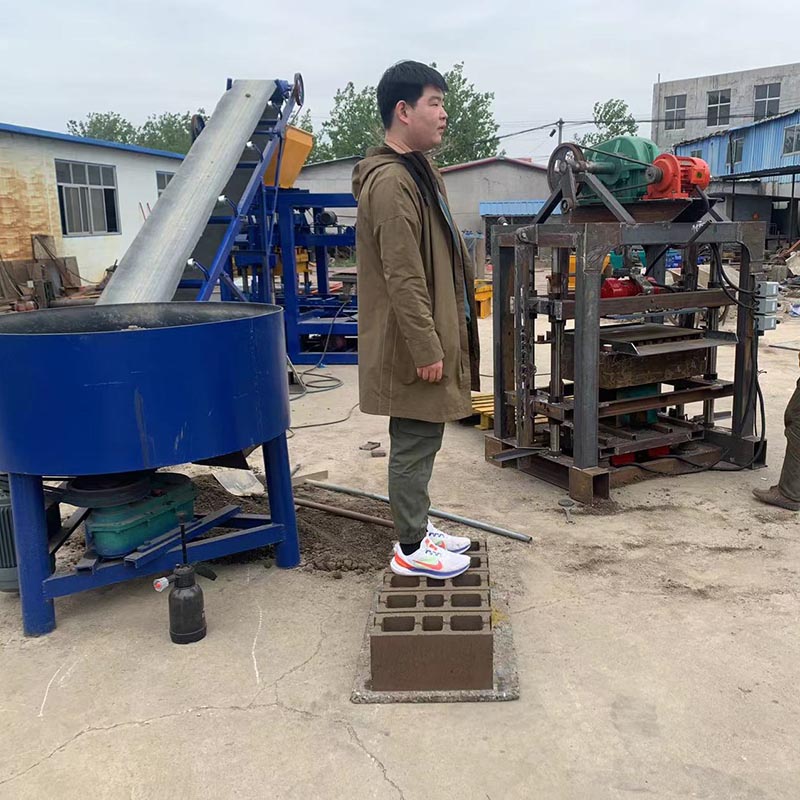
Introduction
Bricks have been a fundamental building material for centuries, serving as the building blocks of human civilization. The production of bricks, however, has not remained stagnant. It has evolved significantly over time, particularly with the advent of brick making machines. This article traces the remarkable journey of brick making machines, from their humble manual origins to the era of automation, showcasing how these innovations have revolutionized the construction industry.
1. The Early Days: Manual Brick Making
In the early days of human civilization, bricks were made by hand, a labor-intensive and time-consuming process.
- Clay Molding: Workers shaped bricks by hand, drying them in the sun or firing them in kilns.
- Limited Production: Manual brick making restricted production capacity and consistency.
2. Industrial Revolution and Early Machinery
With the onset of the Industrial Revolution, the construction industry witnessed the introduction of machinery to aid in brick production.
- Brick Presses: Early machines, like the Stiff-Plastic Brick Press, mechanized the pressing of clay into bricks.
- Increased Output: These machines improved efficiency and increased brick production.
3. Steam-Powered Brick Making
The invention of steam engines brought about a significant leap in brick making technology.
- Steam-Powered Machines: Steam engines were used to power brick presses, automating the molding process.
- Scale of Production: Steam-powered brick making allowed for large-scale production.
4. The Rise of Hydraulic Presses
Hydraulic presses marked a critical turning point in brick making technology.
- Hydraulic Power: Hydraulic presses applied immense pressure to form bricks, reducing human labor.
- Precision and Uniformity: Hydraulic technology ensured consistent brick dimensions.
5. The Birth of Fully Automatic Brick Machines
The 20th century witnessed the emergence of fully automatic brick making machines, further revolutionizing the industry.
- Continuous Production: Automatic machines enabled continuous brick production, reducing downtime.
- Computerized Controls: Computerized systems allowed for precise control over brick quality.
6. Advancements in Material Handling
In addition to molding, material handling also underwent significant advancements.
- Conveyor Belts: Conveyor systems transported raw materials and finished bricks, streamlining the process.
- Robotic Automation: Robots were introduced for stacking and packing bricks.
7. Modern Innovations in Brick Making Machines
Modern brick making machines incorporate cutting-edge technology and sustainability measures.
- Eco-Friendly Kilns: Environmentally friendly kilns reduce emissions and energy consumption.
- Interlocking Brick Technology: Machines that produce interlocking bricks have gained popularity for their strength and stability.
8. The Global Impact of Automation
The automation of brick making has had a profound impact on the global construction industry.
- Affordable Housing: Automation has made bricks more affordable, contributing to affordable housing initiatives.
- Quality Control: Automation ensures consistent quality, reducing construction defects.
9. Case Studies: Automation Success Stories
Explore case studies of regions or companies that have embraced automation in brick making with remarkable results.
- China’s Brick Industry: China’s adoption of automated brick production has contributed to its status as the world’s largest brick producer.
- Europe’s Sustainable Practices: European countries have adopted automation for eco-friendly brick production.
10. Challenges and Future Trends
While automation has brought numerous benefits, it also poses challenges and sparks discussions about the industry’s future.
- Job Displacement: The automation of brick making has raised concerns about job displacement in some regions.
- Sustainable Materials: The future may bring innovations in sustainable brick materials and production methods.
Conclusion: The Future of Automated Brick Making
The evolution of brick making machines from manual labor to automation has been nothing short of remarkable. Today, these machines are at the forefront of sustainable, efficient, and high-quality brick production. As technology continues to advance, the brick making industry is poised to play a vital role in shaping the construction landscape of the future, ensuring that this timeless building material remains as relevant as ever.
